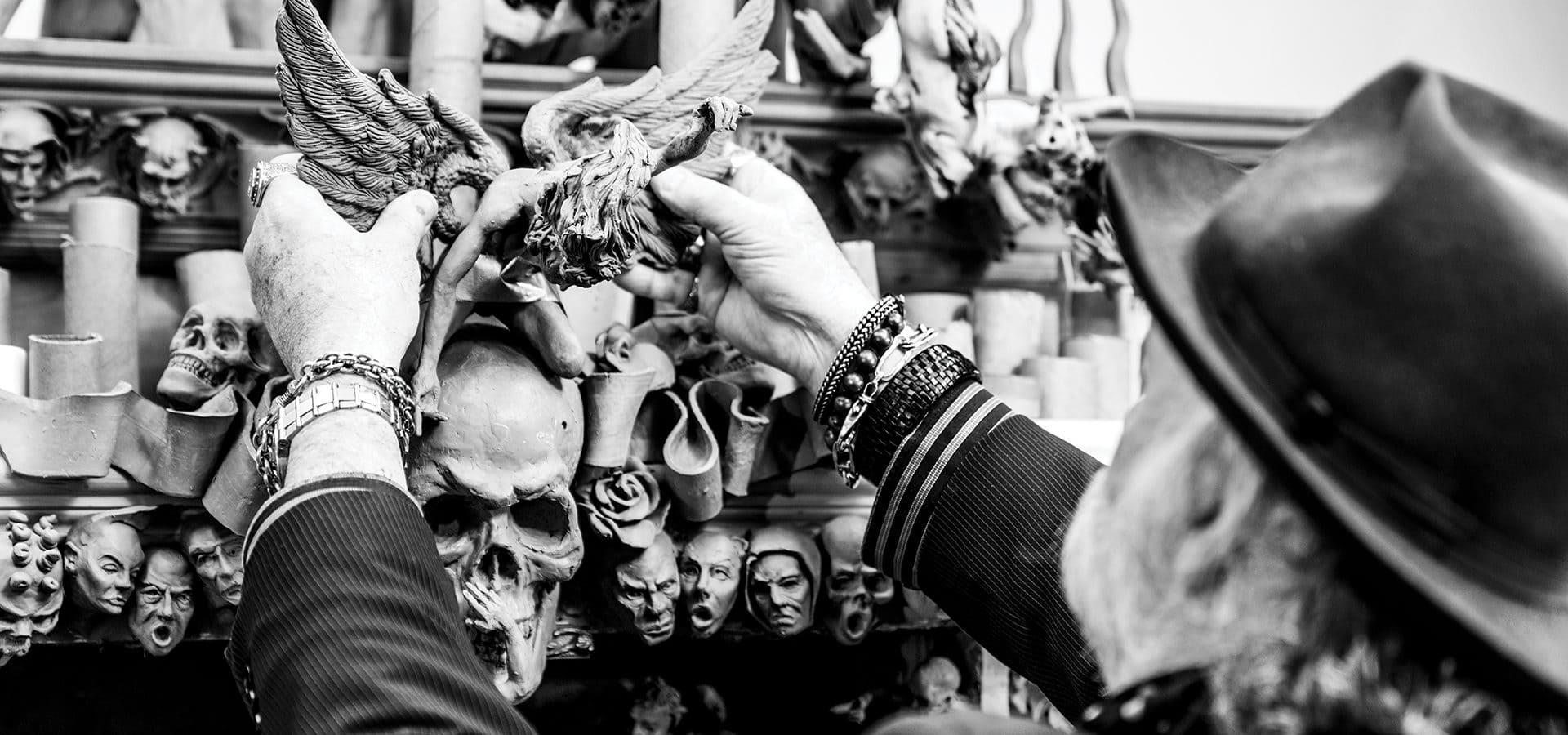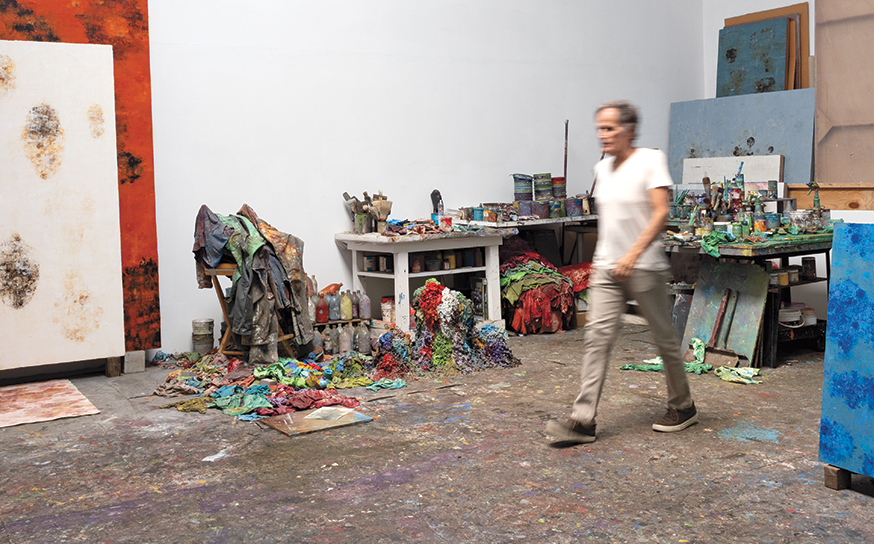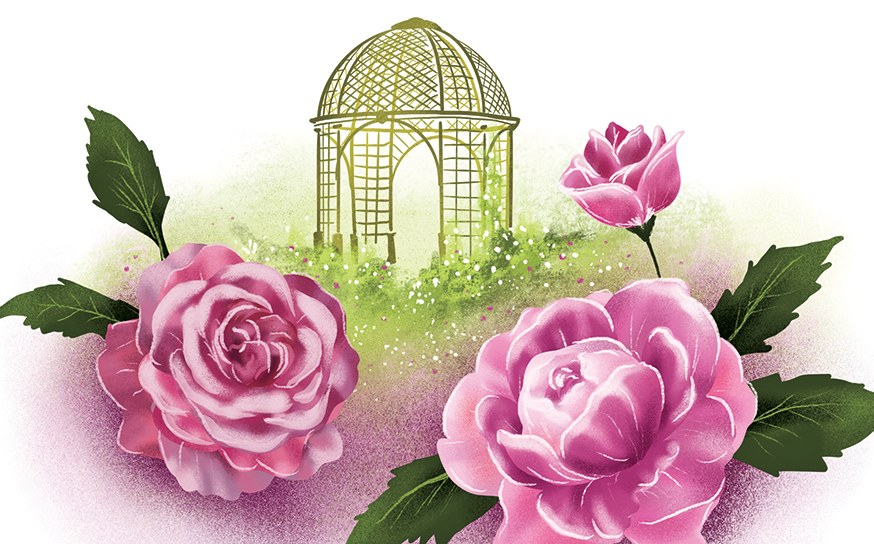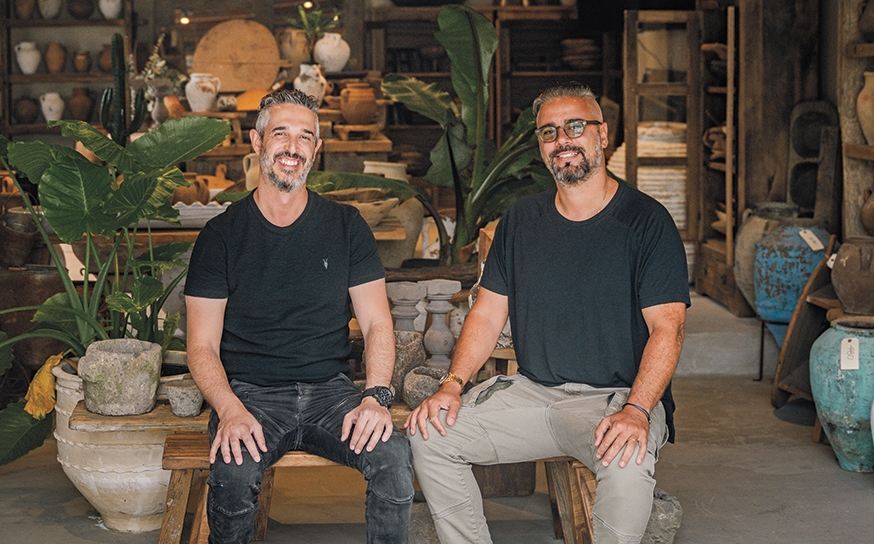By his own account, Stuart Kusher is never satiated. A true polymath and perpetual student, the opinionated artist has had wide-ranging successes from advertising to film to music. Yet he is most passionate about—and quite frankly, all he wants to talk about—is his art. Stuart creates ornate, monumental sculptures that are baroque, gothic, yet startlingly modern at the same time, evoking life’s great mysteries—including his own mortality.
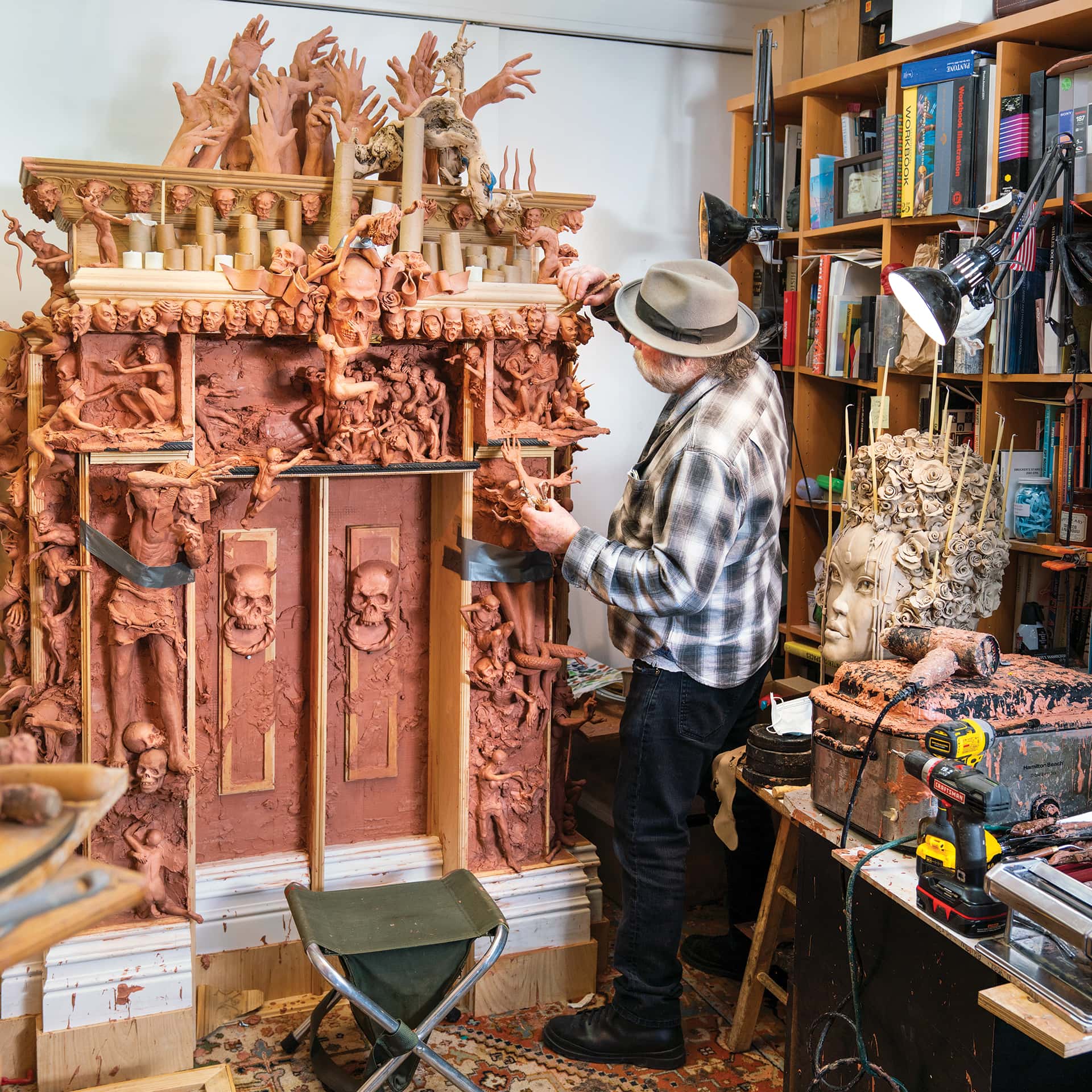
“I’ve almost died several times, you know,” he says. “I know that I’m a lucky guy. I’m always thinking about where I’m going to end up. And know what’s interesting? Nobody really knows. That unknown is what I’m playing with, you know? And I enjoy the unknown.”
When the pandemic struck, Stuart left his old workspace in Boyle Heights and started working at his home studio in Studio City, which he admits has advantages. “I can walk out of my studio door and in 10 feet I’m at my swimming pool!”
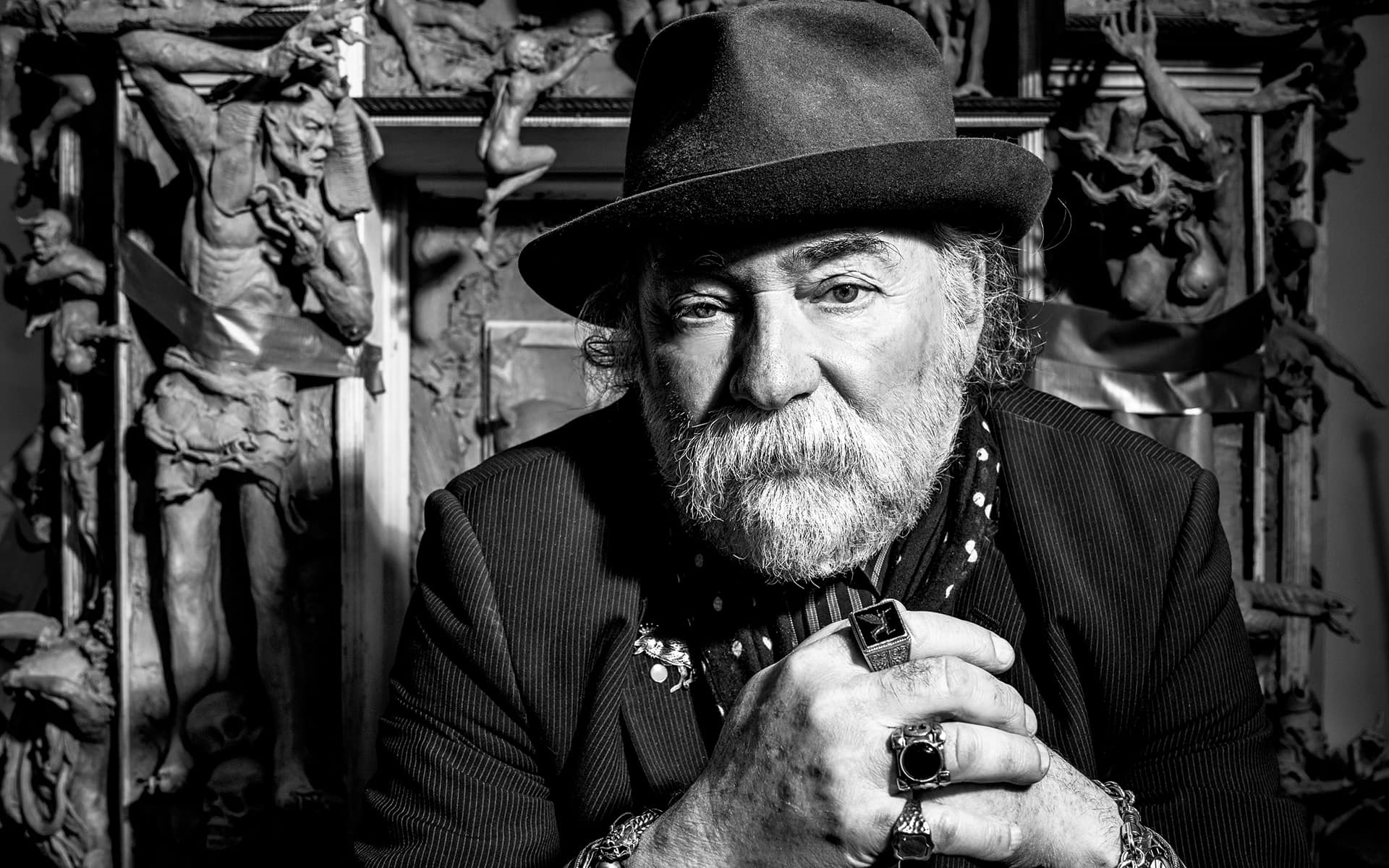
A self-taught sculptor, the Brooklyn-born artist started sculpting faces out of kneaded erasers in elementary school while sitting in the back of the classroom. By the age of 16 he was in a group show at LACMA, and later studied at the Art Center College of Design in Pasadena. A storied, award-winning career as a creative director, producer, director, graphic designer and advertising agency founder followed, in which he helmed ad campaigns for film, TV and fashion. He also worked as senior creative director at a major record company, designing album covers, posters, billboards and TV commercials for several artists and bands including B.B. King, Tom Petty and the Heartbreakers and Steely Dan.
“I’ve won lots of different awards—not that I give a shit, though,” he says.
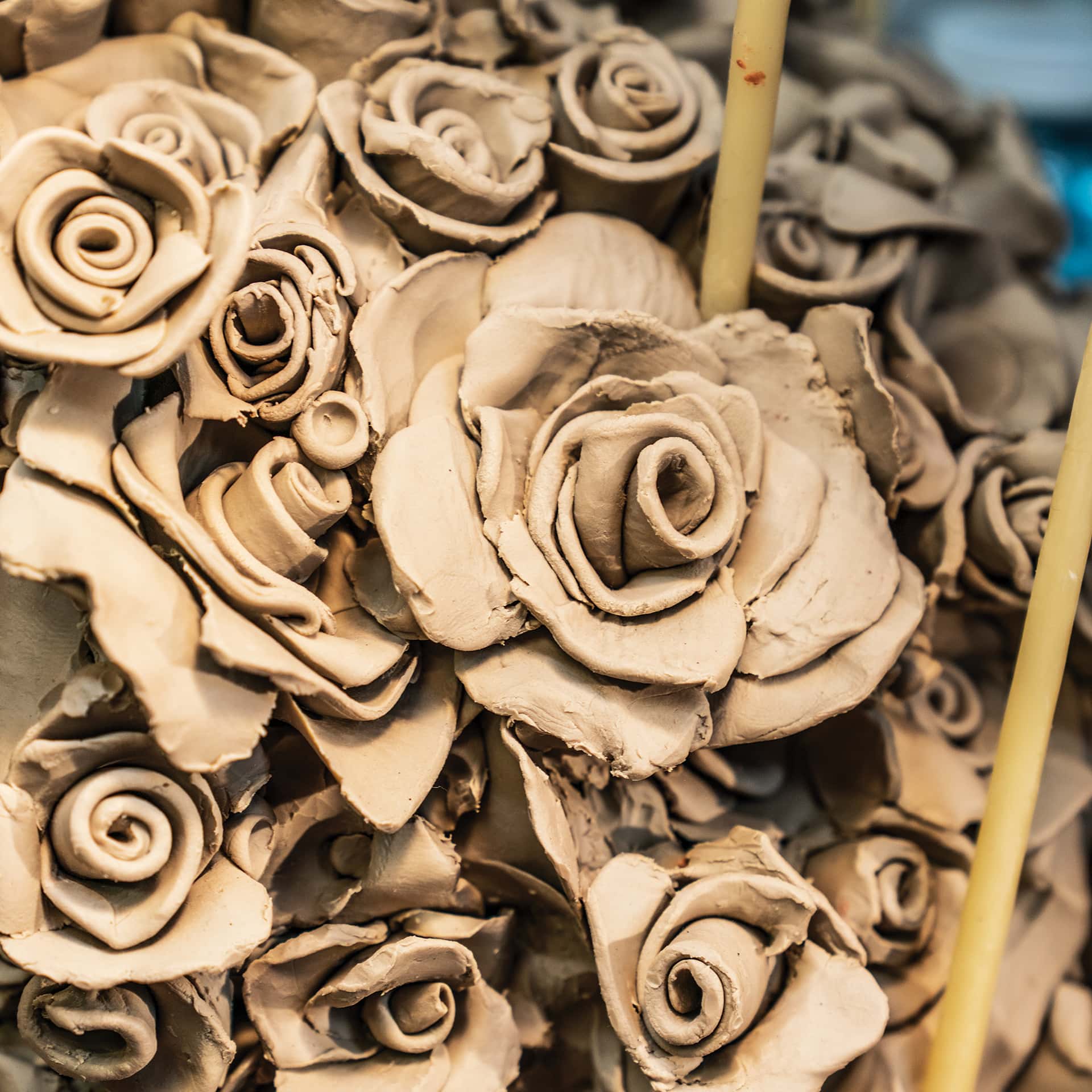
The joy that he experiences today is all found in the rigors of his art practice. Since he doesn’t use live models, the figures spring out of his fertile imagination. “I’ll sit for two, three days, until clay starts to talk to me and I start to see something on that, and then my imagination keeps on going and I start talking to myself, it starts talking back to me, and it evolves,” he says. “It just evolves and that’s what’s a turn-on to me. Every day when I wake up, I don’t know what I’m going to create, and I can’t wait to do it.”
Decades of voracious learning and experimenting inform his artistic process. “I never get blocked up, you know, never. It just flows,” he says. “I know writers that get writer’s block. I don’t have that problem. I think that has to do with the depth of my visual vocabulary.”
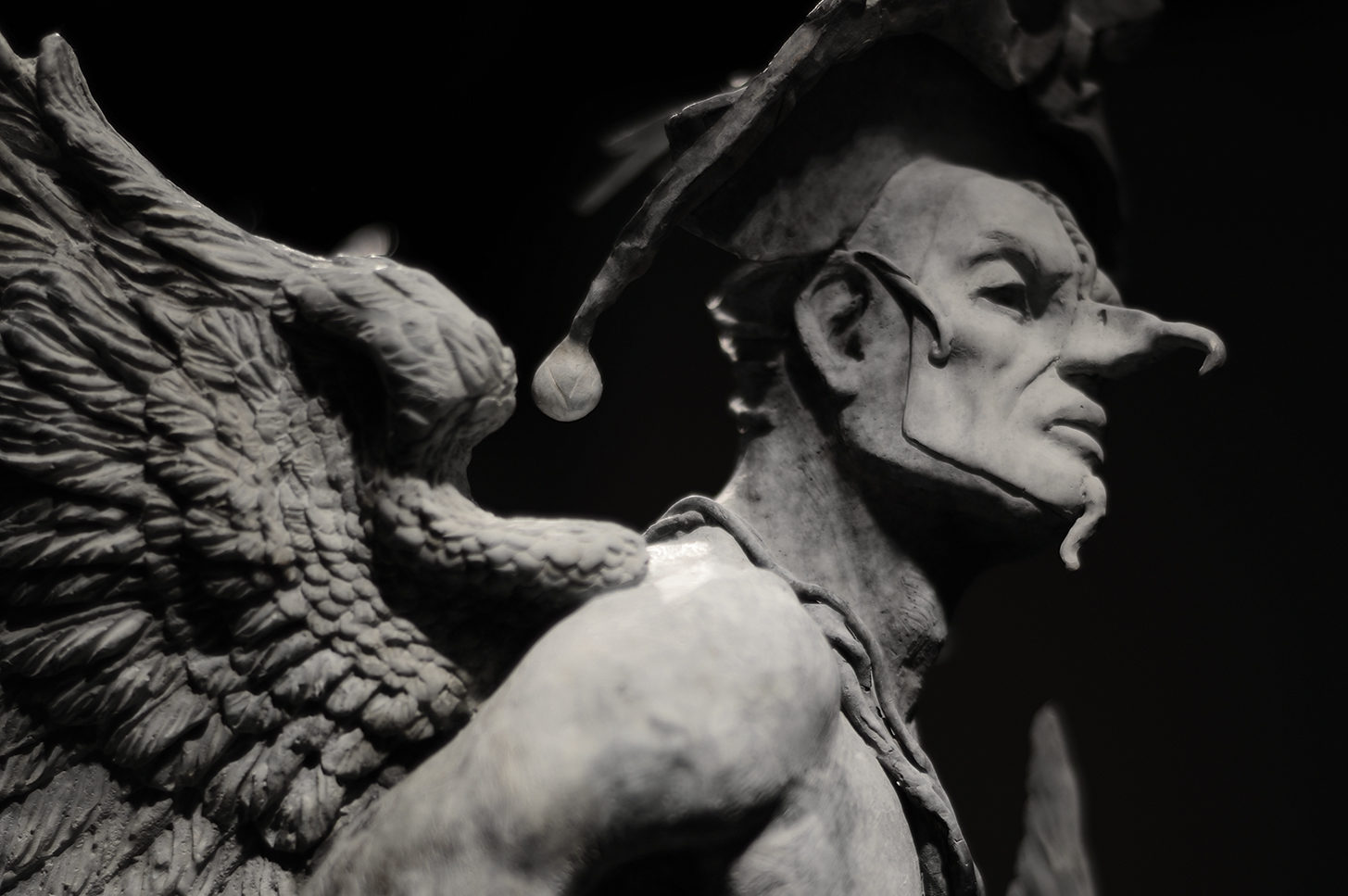
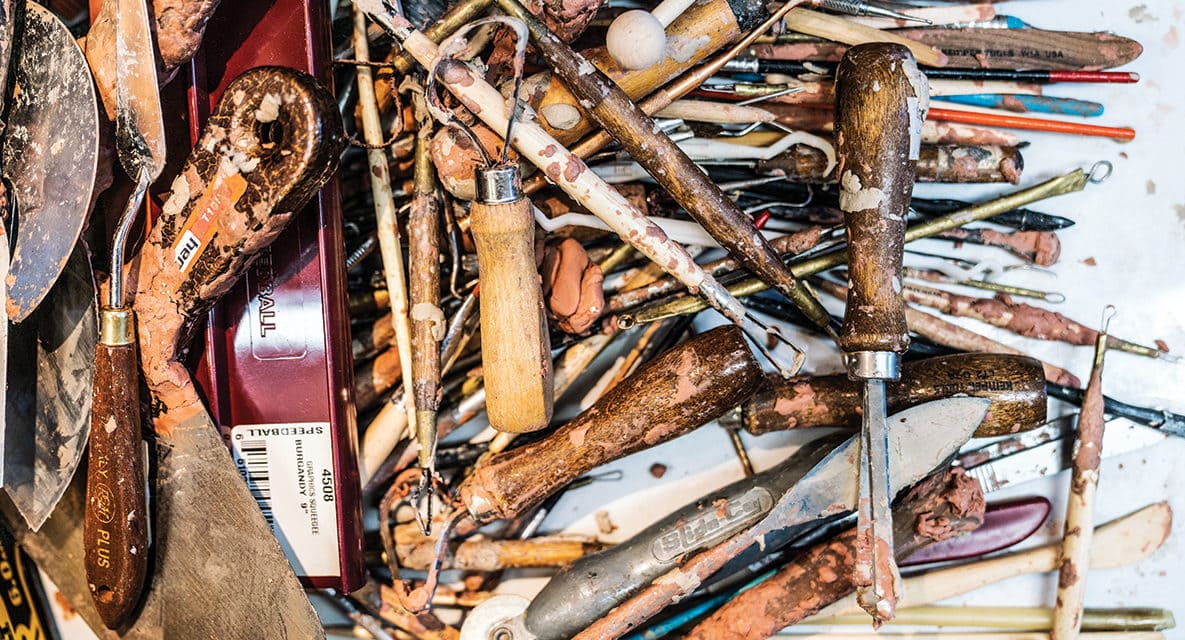
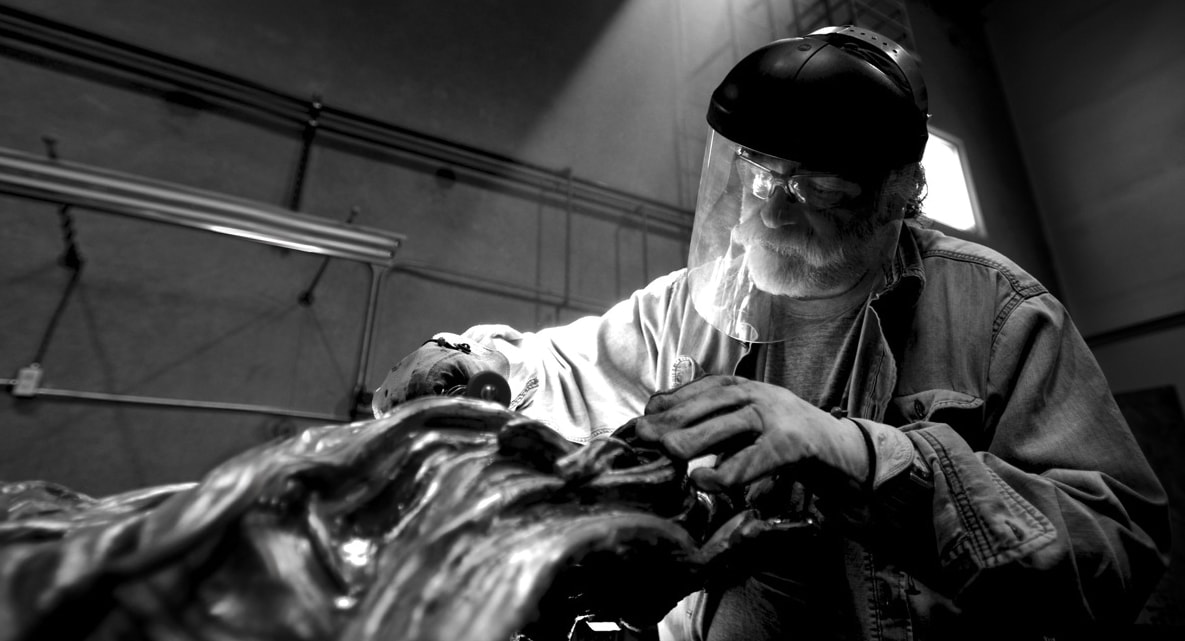
Indeed, many of his works are evocative of famed sculptors of the past, particularly the 17th-century Italian artist Bernini and the monumental works of ancient Greece. “Contessa,” Stuart’s recent masterpiece, is a bronze sculpture of the head of a beautiful goddess that is 8 feet tall and weighs a ton. “I always give women power because that’s how I look at them, very strong,” he says.
Another powerful work is “The Messenger,” which he cast in both bronze and stainless steel. “It’s a nude with giant wings that I engineered so that it’s like she’s floating. The piece appears to be floating over a ring of skulls. There are candles on every other skull, which represent the pillars of society that are being eroded,” he says.
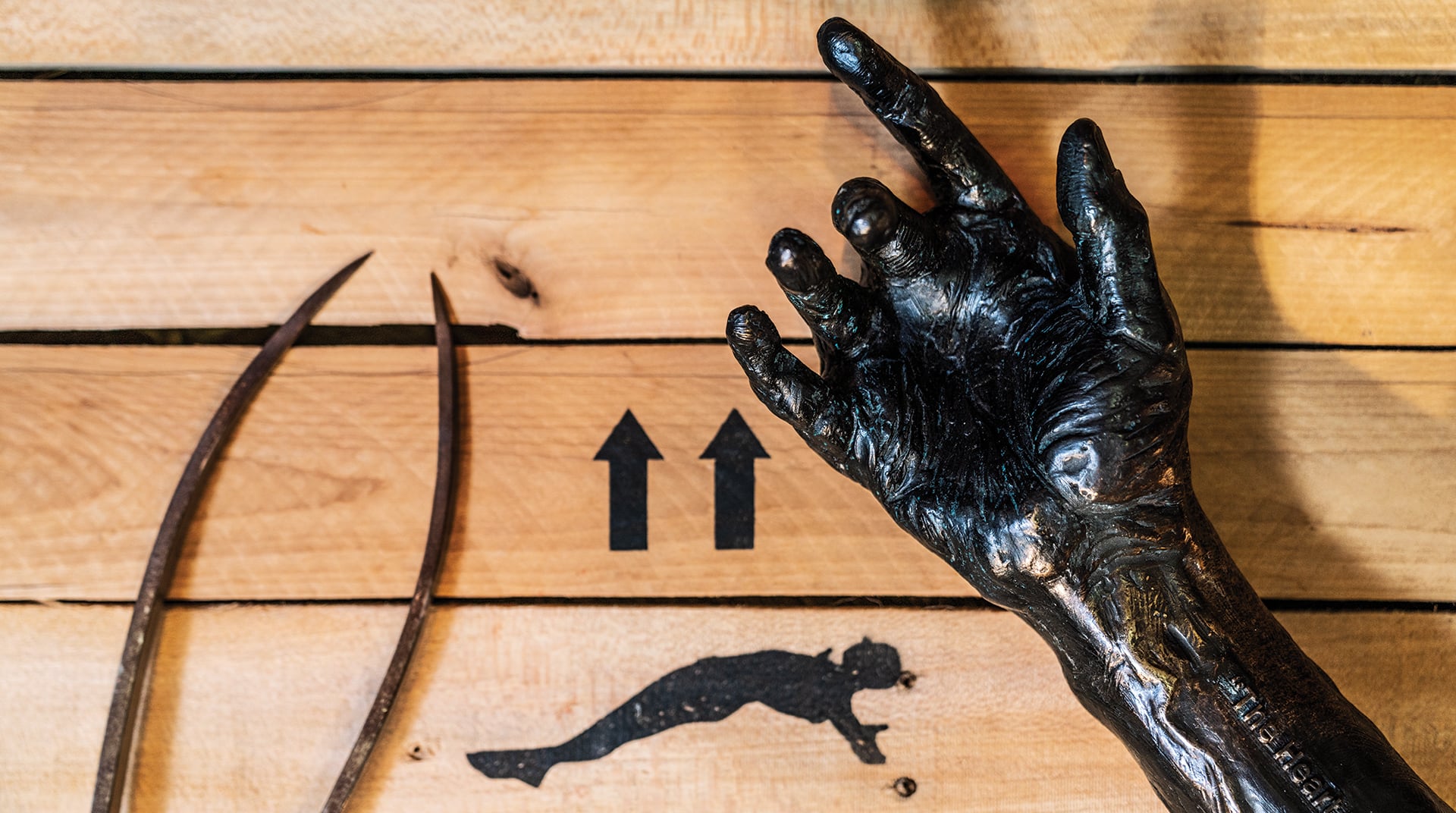
In 2019, Stuart and his son Brandon, a photographer, mounted a joint show called DNA at Fabrik Projects in Los Angeles. “He had half the gallery; I had the other half,” he says. “It was the greatest thing, for a father to be able to share that kind of moment.”
But the sculptor is now on to the next moment, the next challenge. He is currently working on an intricate sculpture entitled “The Gates of Hell,” inspired by Auguste Rodin’s pieces of the same name. “That’s one thing I won’t do: I will not repeat anything,” he says. “That’s the discipline. That’s the part that is the challenge, and it keeps you growing creatively. Some artists get comfortable in a style or something and they sell a few paintings and stuff and they stay with it their entire career. It’s not me. I’m trying to learn.”
Painter and Sculptor Charles Fine Says Growing Up Valley is a Major Influence in His Art
Indelible impressions.
Join the Valley Community






